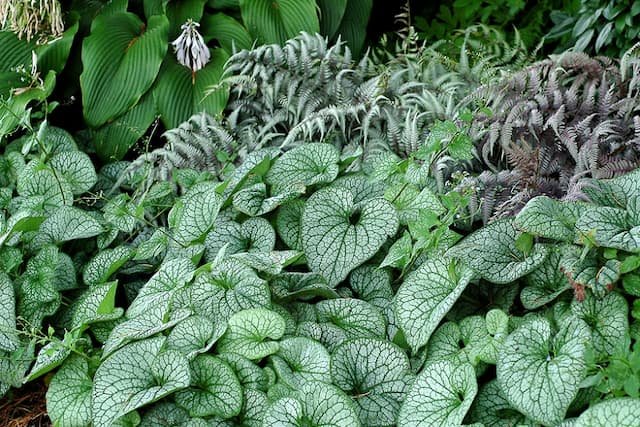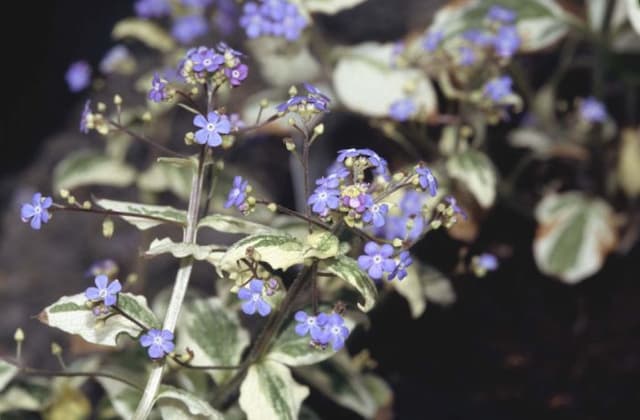Red Feathers Echium russicum

ABOUT
The Red Feathers plant is a strikingly beautiful perennial known for its vibrant red, trumpet-shaped flowers. These flowers are densely packed in long, conical spikes that rise prominently above the foliage. Each individual flower is small and tubular, with a slightly flared mouth, which is irresistible to bees and butterflies that are drawn to the plant for its nectar. The leaves of the Red Feathers plant form a basal rosette at the base of the stems. They are narrow, lance-shaped, and have a somewhat hairy texture, which gives the foliage a slightly rough feel. The leaves are of a deep green color, which contrasts vividly with the bright red of the flowers. The overall appearance of the plant is one of sturdiness and vibrancy, creating a bold statement in any garden or natural setting where it is planted. Its ability to attract pollinators, coupled with its showy blooms, makes it a favorite for gardeners looking to add a splash of color to their landscapes.
About this plant
 Names
NamesSynonyms
Red Viper's-Bugloss, Russian Bugloss, Red Bugloss, Echium Russicum.
Common names
Echium rubrum, Echium fastuosum, Echium maculatum, Echium violaceum.
 Toxicity
ToxicityTo humans
Red Feathers, commonly known as Echium russicum, is not widely recognized as a toxic plant to humans. However, Echium species contain pyrrolizidine alkaloids which can be toxic to the liver if ingested in large quantities over time. There is limited specific information on the toxicity of Red Feathers itself, so caution is advised. In general, symptoms of pyrrolizidine alkaloid poisoning may include liver damage, which can lead to jaundice, abdominal pain, ascites, and in severe cases, liver failure. It is best to avoid consumption of any part of the plant and seek medical advice if ingestion occurs.
To pets
Red Feathers, the most common name of Echium russicum, is not well-documented for its toxicity in pets. However, like in humans, plants in the Echium genus contain pyrrolizidine alkaloids, which can potentially cause liver damage if ingested. While specific symptoms related to Red Feathers ingestion in pets are not widely reported, possible consequences of ingesting pyrrolizidine alkaloids include vomiting, liver failure, and signs of hepatic encephalopathy such as lethargy and disorientation. It is advisable to prevent pets from ingesting this plant and to consult a veterinarian if any part of the plant is consumed.
 Characteristics
CharacteristicsLife cycle
Biennials
Foliage type
Deciduous
Color of leaves
Green
Flower color
Red
Height
2 feet (60 cm)
Spread
1 foot (30 cm)
Plant type
Herb
Hardiness zones
5
Native area
Europe
Benefits
 General Benefits
General Benefits- Attracts Pollinators: Echium russicum is known for its striking red flowers that attract bees, butterflies, and other beneficial insects, promoting biodiversity.
- Drought Tolerance: Once established, Red Feathers has good drought resistance, making it suitable for xeric gardens or regions with low water availability.
- Low Maintenance: The plant typically requires little care once established, aside from possible protection from slugs and snails in its early growth stages.
- Aesthetic Appeal: With its vibrant blooms and unique spire-like flower spikes, Red Feathers can add visual interest to gardens and landscapes.
- Soil Adaptable: It can grow in a variety of soil types, although it prefers well-drained soils, making it versatile for different garden conditions.
- Cold Resistance: Echium russicum is capable of withstanding cold temperatures to some degree, although it is not considered fully frost-hardy.
- Wildlife Shelter: The structure of Red Feathers' foliage can provide shelter to small wildlife, such as beneficial insects and small mammals.
- Fast Growth: It can grow relatively quickly, allowing for faster establishment and filling in of garden spaces.
- Successional Bloom: Its flowering period can be staggered throughout the planting to maintain a long season of aesthetic interest.
- Non-Invasive: Unlike some other species of Echium, Red Feathers is not known to be invasive and generally stays where it's planted without spreading uncontrollably.
 Medical Properties
Medical Properties- Anti-inflammatory: Echium russicum may contain compounds that help reduce inflammation.
- Wound healing: The plant has been traditionally used to promote the healing of wounds.
- Antibacterial: Some research suggests that extracts from Echium russicum could have antibacterial properties.
 Air-purifying Qualities
Air-purifying QualitiesThis plant is not specifically known for air purifying qualities.
 Other Uses
Other Uses- Echium russicum, also known as Red Feathers, can be used as a dye plant, providing natural pigments for textiles and inks.
- In specialized gardens, Red Feathers can be utilized as a part of a xeriscape due to its drought-resistant qualities.
- Because of its striking appearance, Red Feathers is often planted for ornamental purposes in public spaces like parks and alongside roadways.
- The plant can be included in butterfly gardens, as it attracts and provides nectar for a variety of pollinators, including bees and butterflies.
- Echium russicum can be used to stabilize soil and prevent erosion on steep slopes and banks due to its root structure.
- Red Feathers seeds can be a food source for birds, making the plant valuable for creating wildlife-friendly garden habitats.
- As a companion plant, Echium russicum can provide benefits such as repelling certain pests due to its specific odor or floral characteristics when planted in mixed borders.
- The dried seed pods of Red Feathers can be used in floral arrangements and crafts for their unique texture and form.
- In educational settings, this plant can illustrate plant growth and pollination processes to students, as it has distinct anatomical features conducive to teaching.
- Photographers and artists may use Echium russicum as a subject due to its vibrant red-purple flowers and overall impressive visual aesthetic.
Interesting Facts
 Feng Shui
Feng ShuiRed Feathers is not used in Feng Shui practice.
 Zodiac Sign Compitability
Zodiac Sign CompitabilityRed Feathers is not used in astrology practice.
 Plant Symbolism
Plant Symbolism- Resilience: Echium russicum, commonly known as Red Feathers, is known for its ability to endure and adapt to different growing conditions, making it a symbol of resilience and persistence.
- Attraction: With its vibrant, red flowers, Red Feathers is often associated with the power of attraction, whether it be bringing in pollinators or catching the eye of passersby.
- Healing: Many Echium species have been used in traditional medicine, leading the Red Feathers to be linked with healing and soothing properties.
 Water
WaterEchium russicum, commonly known as Russian Echium, should be watered deeply and allowed to dry out partially between waterings. In general, water approximately once a week, providing 1 to 2 gallons per plant depending on the size and the weather conditions. During hot, dry spells, you may need to water more frequently. Over the winter months or in cooler weather, reduce watering to every other week or when the soil feels dry to the touch. Make sure to water at the base of the plant to avoid wetting the foliage, which can promote fungal diseases.
 Light
LightRussian Echium thrives best in full sun conditions with at least 6 to 8 hours of direct sunlight daily. A southern or western exposure is ideal for this plant, providing the necessary intense light. In regions with extremely hot summers, some afternoon shade can be beneficial to prevent scorching.
 Temperature
TemperatureRussian Echium prefers a warm climate and does well between 50°F to 85°F. It can tolerate temperatures down to about 30°F, but frost can damage the plant. The ideal growing conditions for Russian Echium include temperate nights and warm days, which promotes healthy growth and flowering.
 Pruning
PruningPruning Russian Echium is done to remove spent flower stalks, maintain plant shape, and encourage denser growth. Prune right after flowering, typically in late summer or early fall. If necessary, light shaping can be done in the spring, but avoid heavy pruning as this can reduce blooming.
 Cleaning
CleaningAs needed
 Soil
SoilRussian Viper's Bugloss requires well-draining soil with a pH neutral to slightly alkaline range, ideally 6.5 to 7.5. A mix of loam, sand, and a bit of compost is ideal to provide the nutrients and drainage this plant prefers.
 Repotting
RepottingRussian Viper's Bugloss grows well in the ground and does not typically require repotting. Instead, plant it in a suitable location where it can grow undisturbed for several years.
 Humidity & Misting
Humidity & MistingRussian Viper's Bugloss prefers dry to average humidity conditions as it is tolerant of drought-like environments once established.
 Suitable locations
Suitable locationsIndoor
Provide full sun, well-drained soil, and minimal watering for Russian Viper's Bugloss.
Outdoor
Plant in full sun, well-draining soil, and space sufficiently for Russian Viper's Bugloss.
Hardiness zone
Russian Viper's Bugloss is suited for USDA zones 5-9.
 Life cycle
Life cycleEchium russicum, commonly known as the Red Feathers, begins its life cycle as a seed that germinates in warm, well-drained soil with full to partial sunlight exposure. After germination, the seedling emerges and develops a rosette of hairy, lanceolate leaves during its initial growth. Over time, typically in its second year, the plant advances to the vegetative stage, growing taller stems and more leaves, and preparing for flowering. The Red Feathers then enters the reproductive stage, producing tall spikes adorned with vibrant, reddish-purple flowers that attract pollinators and are capable of self-fertilization. After pollination, the plant sets seeds, which are dispersed by wind, gravity, or animals, completing the cycle. The plant typically dies after seeding, characterizing it as a biennial or short-lived perennial, depending on growing conditions.
 Propogation
PropogationPropogation time
Spring-early summer
Echium russicum, commonly known as the Red Feathers, is typically propagated by seed. The best time for sowing is either in late winter or early spring. Seeds need a well-draining soil mix and should be sown on the surface since they require light for germination. Covering the seeds with a thin layer of soil or vermiculite can be beneficial. The pot or tray with seeds should then be placed in a warm area with temperatures around 65 to 70°F (18 to 21°C). Germination usually occurs within two to three weeks, and seedlings can be transplanted once they are large enough to handle. Care should be taken during transplanting as Echium russicum has a taproot that can be easily damaged.









